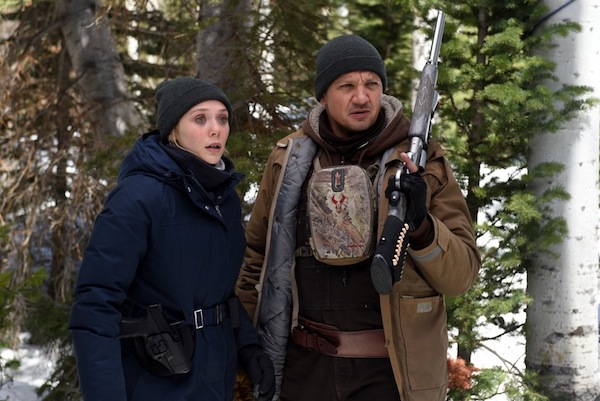
'Wind River' investigates reservation murder
By Martha K. Baker
The moon is full over snowed water. The snow is dirtied by time. The red, bloodied by death. The scene begins the shocking, excellent film Wind River, named for Wyoming's only American Indian reservation. Before that scene settles, a marksman has found a teen-ager. She is dead on the landscape.
Cory Lambert, played stoically by Jeremy Renner, is a sniper for the U.S. Fish and Wildlife Service. He knows how to hunt, which means he knows how to track. Those credentials support him well when an FBI agent arrives to determine if the woman's death is a homicide on federal land. The case is low priority so Jane Banner, based in Las Vegas, is sent to decide who's going to investigate, the feds or the tribal authorities. She's barely dressed warmly.
Banner, played wide-eyed but steely by Elizabeth Olsen, seems to be too untried in the field to be effective. Not what she seems, she serves as the eyes of the newcomer through whom we, also new, see this mystery. As a newby, she needs Lambert. He is also not what he seems.
Wind River explores the deprivation of a reservation, the violence of a drug- and alcohol-infested world where women don't count. Literally: Native American women who go missing are not included in the records.
In addition to the strength of Renner and Olsen is the acting of a largely Native American supporting cast, including Julia Jones, Kelsey Asbille, Gil Birmingham as the dead teen's father, and the evergreen Graham Greene as the wry tribal police officer.
Taylor Sheridan, who wrote the script for the marvelous Hell or High Water, produced a fine script for Wind River, but mumbling reduces it. He also directed the film, building from a meaty climax to a decent denouement. Wind River is violent and hard to watch, but gripping and telling with effective music.


